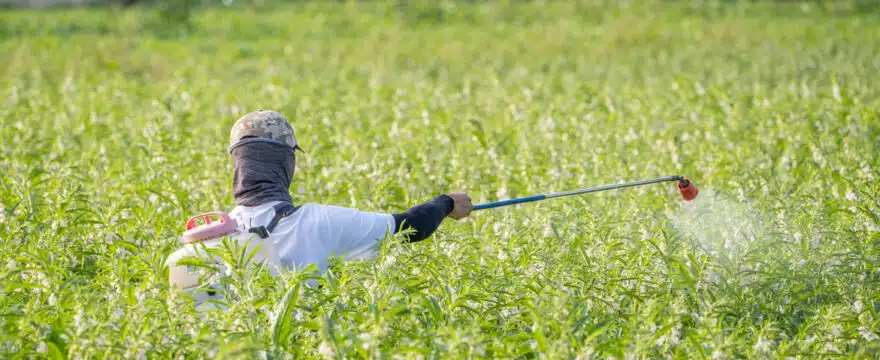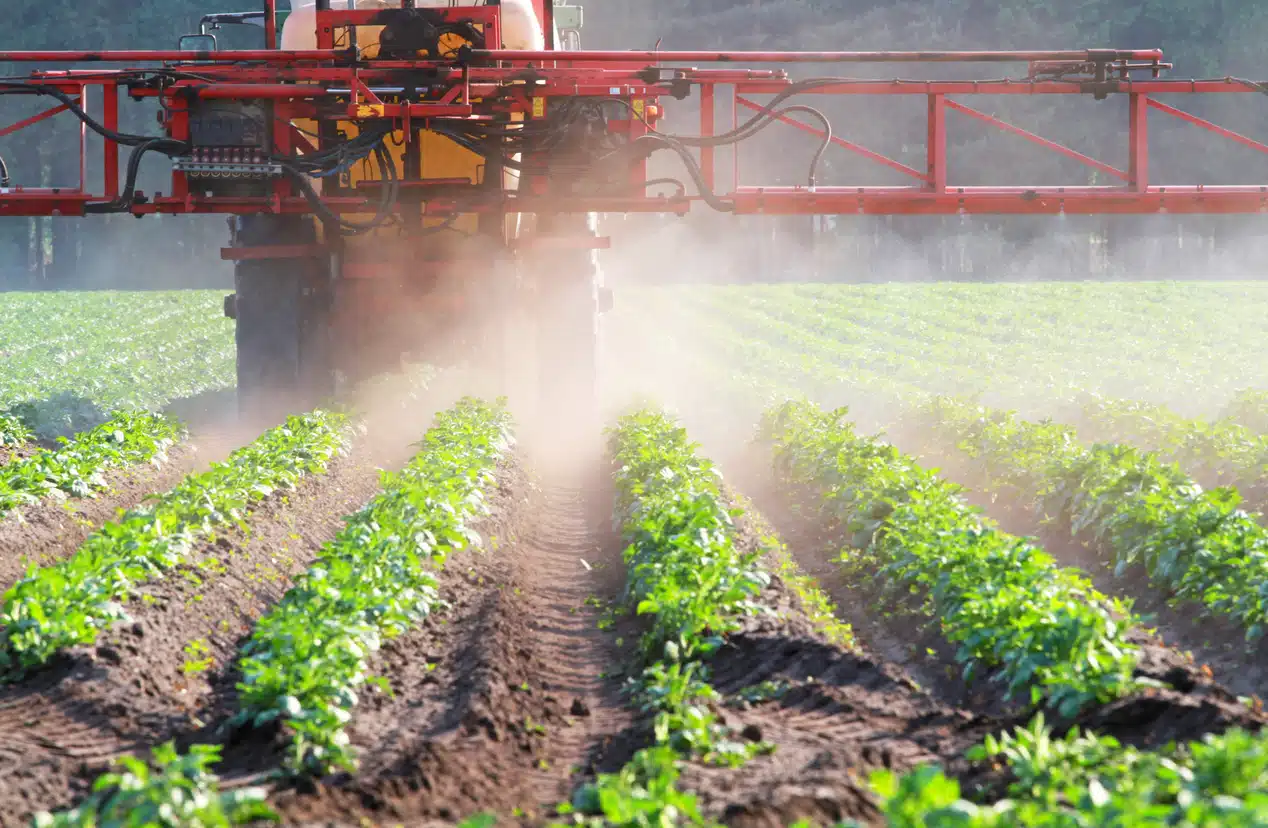Contents
- 1 Free Paraquat Lawsuit Review
- 2 Understanding Paraquat and Its Dangers
- 3 The Connection Between Paraquat and Parkinson’s Disease
- 4 Filing a Paraquat Lawsuit: Eligibility and Process
- 5 Legal Developments and Updates in Paraquat Lawsuits
- 6 Choosing the Right Paraquat Lawyer
- 7 Protecting Yourself from Paraquat Exposure
- 8 Summary
- 9 Frequently Asked Questions
- 10 Find Out if You Qualify For a Paraquat Lawsuit
As the dangers of Paraquat become more widely recognized, the legal landscape surrounding this toxic herbicide is rapidly evolving. With numerous paraquat lawsuits underway and substantial (potential) settlements on the horizon, staying informed about the latest developments in the Paraquat Parkinson’s disease lawsuit is essential for those affected by Paraquat exposure. In this blog post, we’ll delve into the intricacies of Paraquat, its connection to Parkinson’s disease, and the current state of paraquat lawsuit proceedings. Together, we’ll uncover crucial information that could impact the lives of thousands of individuals and their families.
Quick Overview of The Paraquat Lawsuit
- Paraquat is a toxic herbicide linked to an increased risk of Parkinson’s disease.
- Global authorities have implemented varying regulations and individuals affected by Paraquat exposure may be eligible for compensation through filing a Parkinson’s disease paraquat lawsuit.
- Safety precautions should be taken to protect oneself from potential health risks associated with Paraquat exposure.
Free Paraquat Lawsuit Review
Have you or a loved one been exposed to Paraquat and subsequently been diagnosed with Parkinson’s disease? If so, you may be entitled to significant financial compensation by filing a Paraquat lawsuit.
For a no-cost, no-obligation review of your potential case, please start your instant Paraquat case review below.
Instant Case Review
Hi there 👋 I can help you to quickly see if you qualify!
Is the injured individual you or a loved one?
Understanding Paraquat and Its Dangers
Agriculture has long relied on chemicals to protect crops and ensure bountiful harvests. However, not all chemicals are created equal. Paraquat, a highly toxic herbicide, has been linked to a host of health issues, most notably Parkinson’s disease. Despite its undeniable effectiveness in combating weeds and grasses, more than 30 countries have banned Paraquat due to the risks it poses.
Are the hazards of Paraquat exposure worth the benefits it provides to agriculture? Let’s explore the properties of this controversial herbicide and the dangers it presents.
What Is Paraquat?
Paraquat (paraquat dichloride), sold under brand names such as Gramoxone and Ortho Paraquat, is a highly toxic herbicide used primarily for weed control in agricultural settings. Its popularity surged in recent years due to the increasing number of Roundup lawsuits and the rise of glyphosate-resistant weeds. However, its widespread use comes with a significant downside: the potential for severe health risks.
The United States Environmental Protection Agency (EPA) classifies Paraquat as a “restricted-use pesticide,” aka toxic chemical, indicating that it cannot be used for recreational purposes. Only certified licensed Paraquat applicators can legally handle and apply Paraquat in the United States.
Despite these restrictions, individuals living near farms or working in agriculture may still be exposed to this dangerous chemical.
Health Risks Linked to Paraquat
Paraquat’s potency as a herbicide is matched by its potential to cause harm to humans. The Centers for Disease Control and Prevention (CDC) ranks Paraquat as more toxic than other herbicides. This makes it crucial for users to take extra precautions when handling this chemical. The most concerning health risk associated with Paraquat exposure is its link to Parkinson’s disease and Paraquat poisoning, a debilitating neurodegenerative disorder that affects the motor system.
Numerous studies have confirmed the connection between Paraquat exposure and Parkinson’s disease. For instance, the FAME study found that exposure to Paraquat resulted in a 25% increase in the incidence of Parkinson’s disease. With such compelling evidence, it’s clear that the dangers of Paraquat can no longer be ignored.
The health risks are not limited to those who directly handle the herbicide Paraquat. Individuals living near industrial farms may also be exposed through spray drift or contaminated water sources. As awareness of these risks continues to grow, so too does the urgency to find alternatives to this hazardous chemical.
Global Paraquat Regulations
The mounting evidence of Paraquat’s dangers has led to increased scrutiny by regulatory authorities worldwide. In 2012, China announced it would phase out Paraquat to ensure the safety of its citizens. Similarly, Paraquat has been banned in England, the European Union, and Switzerland since 2013 and 1989, respectively.
Conversely, the United States has opted for stricter safety measures rather than an outright ban. The EPA announced in March 2016 that they would conduct further investigations into the potential health risks posed by Paraquat.
As global regulations continue to evolve, it’s crucial for individuals to stay informed about the potential risks associated with Paraquat exposure.
The Connection Between Paraquat and Parkinson’s Disease
The alarming correlation between being exposed to Paraquat and Parkinson’s disease has been a subject of extensive research over the past decade. Prolonged exposure to this toxic Paraquat herbicide has been shown to significantly increase the risk of developing the debilitating disorder.
But what exactly is the link between Paraquat and Parkinson’s disease, and how can individuals protect themselves from this dangerous chemical? By examining the studies that support the connection between Paraquat and Parkinson’s disease, as well as the mechanisms by which Paraquat contributes to the development of the disorder, we can better understand the risks associated with Paraquat exposure and take steps to mitigate them.
Studies Supporting the Link
Scientific research over the past 12 years has increasingly exposed a clear relationship between exposure to Paraquat and Parkinson’s disease. This body of evidence is growing, providing irrefutable proof of the correlation. One of the earliest studies to highlight this connection was published in 2009 by the American Journal of Epidemiology.
More recently, the FAME study revealed that exposure to Paraquat was associated with a 25% increase in the incidence of Parkinson’s disease. These studies and others have provided compelling evidence of the dangers posed by Paraquat exposure.
As the body of research continues to grow, the case against Paraquat becomes increasingly difficult to ignore.
How Paraquat Contributes to Parkinson’s Disease
The link between Paraquat exposure and Parkinson’s disease can be traced to the herbicide’s ability to cause oxidative stress and damage to the brain. Oxidative stress occurs when the body’s natural defenses against free radicals are overwhelmed, leading to cellular damage. In the case of Paraquat, this damage can ultimately result in the accumulation of alpha-synuclein in the brain, a key factor in the progression of Parkinson’s disease.
As our understanding of the mechanisms underlying the connection between Paraquat and Parkinson’s disease continues to evolve, so too does our ability to protect ourselves from this dangerous chemical. By recognizing the risks associated with Paraquat exposure and taking appropriate precautions, we can help reduce the incidence of Parkinson’s disease and improve the lives of those affected by this debilitating disorder.
Filing a Paraquat Lawsuit: Eligibility and Process
For those who have been exposed to Paraquat and subsequently been diagnosed with Parkinson’s disease, seeking Paraquat settlements and legal recourse may be an essential step in obtaining justice and compensation for their suffering. Filing a Paraquat lawsuit can be a complex and emotionally challenging process, but with the right information and legal representation, it is possible to navigate the legal system and secure a favorable outcome.
In this section, we will discuss the eligibility criteria for filing a Paraquat lawsuit, as well as the steps involved in pursuing a claim. By understanding the process and working with experienced Paraquat attorneys, individuals affected by Paraquat dichloride can take control of their situation and fight for the compensation they deserve.
Who Can File a Paraquat Lawsuit?
Filing a Paraquat lawsuit is not limited to those who have directly handled the herbicide. Individuals who have been exposed to the herbicide Paraquat through their work or residence near a farm and have since been diagnosed with Parkinson’s disease may also be eligible to pursue a Paraquat class action. The key factor in determining eligibility is the establishment of a clear connection between Paraquat exposure and the subsequent development of Parkinson’s disease.
If you believe that your Parkinson’s disease is a result of being exposed to Paraquat, it is essential to consult with an experienced attorney who can help you determine your eligibility for a lawsuit and guide you through the legal process.
Steps to Filing a Paraquat Lawsuit
Initiating a Paraquat lawsuit begins with finding the right legal representation. An attorney with experience in handling toxic tort cases and a deep understanding of the science behind Paraquat poisoning exposure and Parkinson’s disease will be best equipped to build a strong case on your behalf. Once you have secured legal representation, your Paraquat lawyers will guide you through the necessary paperwork and help you gather the evidence required to substantiate your claim.
It is important to note that there are time constraints associated with filing a Paraquat exposure lawsuit, so it is advisable to seek legal counsel as soon as possible. By acting quickly and working with a experienced Paraquat lawyers, you can maximize your chances of success and secure the compensation you deserve.
Legal Developments and Updates in Paraquat Lawsuits
As more individuals file Paraquat lawsuits, the legal landscape surrounding this toxic herbicide continues to evolve. Paraquat class action lawsuits have been consolidated into a multidistrict litigation (MDL) to streamline the handling of these complex cases, and bellwether trials are scheduled to begin in July 2022. These trials will serve as test cases to help determine the potential value of settlements and guide both plaintiffs and defendants in deciding whether to settle or proceed to trial.
In this section, we will discuss the current state of Paraquat lawsuits, including recent developments in the Paraquat MDL and bellwether trials, as well as potential settlement amounts. By staying informed about the latest legal developments, individuals affected by Paraquat exposure can better understand their options and make informed decisions about pursuing a Paraquat Parkinson’s lawsuit.
Multidistrict Litigation (MDL) and Bellwether Trials
Multidistrict Litigation (MDL) is a specialized federal legal procedure. It helps to expedite the proceedings of complex litigations by streamlining all pretrial procedures in one court. This process helps to streamline the legal proceedings and reduce the burden on individual courts. In the case of Paraquat lawsuits, an MDL has been established to manage the thousands of cases filed against the manufacturers of the herbicide.
Bellwether trials are a series of trials used to assess the validity of a plaintiff’s case. The outcomes of these trials can be used to ascertain the value of a settlement or to direct the parties in determining whether to settle or proceed to trial. In the case of Paraquat lawsuits, the first bellwether trial is now scheduled for October 2023.
The outcomes of the Paraquat MDL and bellwether trials will be crucial in determining the future of Paraquat lawsuits. As these legal proceedings unfold, it’s important for individuals affected by Paraquat exposure to stay informed about the latest developments and consider their options for pursuing legal action.
Settlements and Compensation
As Paraquat lawsuits progress through the legal system, settlements and compensation become an increasingly important consideration for plaintiffs. While the exact amount of compensation will vary depending on the individual circumstances of each case, settlements for Paraquat lawsuits are expected to range from $250,000 to $600,000 per person, with some Parkinson’s disease lawsuits being worth more than $1,000,000+.
It’s important to remember that these figures are estimates and that the actual settlement amounts will be determined on a case-by-case basis. By working with an experienced Paraquat lawyer and staying informed about the latest Paraquat litigation and legal developments, individuals exposed to Paraquat can maximize their chances of securing the compensation they deserve.
Choosing the Right Paraquat Lawyer
Finding the right lawyer to represent you in a Paraquat lawsuit is a critical step in securing the best possible outcome for your case. With so many Paraquat lawyers competing for your attention, it can be difficult to determine which one is the best fit for your needs.
In this section, we’ll provide some tips for choosing the right Paraquat lawyer, as well as highlight the success of Johnson//Becker, a firm that has recovered billions of dollars for its clients. By considering factors such as experience, track record, and fee structure, you can make an informed decision about which Paraquat lawyer is best suited to handle your case and help you secure the compensation you deserve.
Experience and Track Record
When selecting a Paraquat attorney, it’s essential to consider their experience and track record in handling toxic tort cases and their knowledge of the science behind Paraquat exposure and Parkinson’s disease. Firms like Johnson//Becker have a proven track record of success, with over two decades of experience and billions recovered for clients.
By choosing a lawyer with a strong background in Paraquat Parkinson’s disease lawsuits, you can be confident that your case is in capable hands.
Contingency Fee Basis
Another crucial factor to consider when selecting a Paraquat lawyer is their fee structure. Many attorneys, including those at Johnson//Becker, work on a contingency fee basis, meaning they only receive payment if they secure a successful outcome for their clients.
This arrangement not only makes legal representation more accessible to those who may not have the financial means to cover legal fees upfront, but also provides an incentive for attorneys to accept cases they believe have a high probability of success.
Protecting Yourself from Paraquat Exposure
While legal action can help those affected by Paraquat exposure secure compensation for their suffering, it’s essential to take steps to protect yourself and your loved ones from this dangerous chemical in the first place. By following safety precautions and staying informed about the risks associated with Paraquat, you can minimize your exposure and reduce the likelihood of developing Parkinson’s disease or other health issues.
In this section, we will discuss safety precautions for licensed applicators and nearby residents to reduce their risk of Paraquat exposure. By taking these measures, you can safeguard your health and the health of those around you.
Safety Precautions for Licensed Applicators
As a licensed applicator, it’s crucial to follow the safety guidelines established by the EPA and state, territorial, and tribal laws when handling and applying Paraquat. This includes using appropriate protective equipment, ensuring proper storage and disposal of Paraquat, and adhering to all requirements on product labels.
By adhering to these safety measures, licensed applicators can minimize their risk of exposure and protect themselves, their coworkers, and nearby residents from the potential dangers associated with Paraquat.
Reducing Exposure for Nearby Residents
For those living near farms or working in agriculture, reducing exposure to Paraquat is equally important. Measures such as purchasing organic and locally grown produce, washing fruits and vegetables thoroughly before consumption, and wearing protective clothing when in contact with areas where Paraquat has been applied can help minimize your risk of exposure.
By taking these precautions, you can protect yourself and your loved ones from the potential health risks associated with Paraquat exposure.
Summary
In conclusion, the dangers associated with Paraquat exposure are becoming increasingly clear, and the legal landscape surrounding this toxic herbicide continues to evolve. As the Paraquat class action progresses and settlements emerge, staying informed about the latest developments is essential for those affected by Paraquat exposure and their families.
By understanding the risks associated with Paraquat, following safety precautions, and seeking the assistance of an experienced attorney, you can take control of your situation and fight for the justice and compensation you deserve. File a Paraquat lawsuit and together, we can work towards a future free from the devastating effects of Paraquat exposure and Parkinson’s disease.
Frequently Asked Questions
How much is the average settlement for a paraquat lawsuit?
The average Paraquat settlement in a paraquat lawsuit can range from $100,000 to $150,000 depending on the severity of the injury. Some estimates are estimating the Paraquat settlement to pay plaintiffs diagnosed with parkinson’s disease upwards of $1,000,000. The amount awarded for each claim is determined by assessing the impact the illness has had and may continue to have on the individual’s life and all of these Paraquat settlement amounts are estimates.
Has the paraquat lawsuit been settled?
The paraquat lawsuit has not yet been settled, as Syngenta and the other defendants have only reached a Paraquat settlement agreement with some claimants.
The outcome of the first trial in October 2023 is expected to provide further information on potential case values.
How many paraquat lawsuits are there?
As of March 16, 2022, there are 875 Paraquat lawsuits pending in the MDL class action. These lawsuits are being brought by individuals who allege that Paraquat exposure caused their Parkinson’s disease.
What’s happening with the paraquat lawsuit?
March 3, 2022 Update: After an extensive legal battle over Paraquat, Judge Rosenstengel ruled on the defendants’ motion to dismiss the case. As a result, the public nuisance and Minnesota consumer protection claims were rejected.
It looks like the plaintiffs will have to take another route if they want to pursue their claims against Paraquat.
Find Out if You Qualify For a Paraquat Lawsuit
Have you or a loved one been exposed to Paraquat and subsequently been diagnosed with Parkinson’s disease? If so, you may be entitled to significant financial compensation by filing a Paraquat lawsuit.
For a no-cost, no-obligation review of your potential case, please start your instant Paraquat case review below.







